|
Christian Message Board. http://members3.boardhost.com/beliver/ The Bulgarian Orthodox Church. The Bulgarian Orthodox Church in English. Bulgarian Orthodox Diocese of Western- and Central Europe. Poststamp of Father Paisij. With Christ and Macedonia in the heart. Foundation Methodi Koussev. The Pokrov Foundation. Archive of the www-site of the Church of Bulgaria. Pravoslavieto. MAKEDONSKA PRAVOSLAVNA CRKVA. Macedonian Orthodox Church. Orthodox Christian Information Centre. Expulsion of Orthodox Christians from Tsarigrad at the begining of the 20th century. The Icons of Bulgaria. Churches and Monasteries. Bulgarskata Pravoslavna Tsarkva v Norvegia. St. Alexander Nevski, Memorial Church. The Boyana Church near Sofia. Churches in Ohrid with Map.
Old Bulgarian & Thracian Religions.
Fire Dancing - Nestinarstvo. 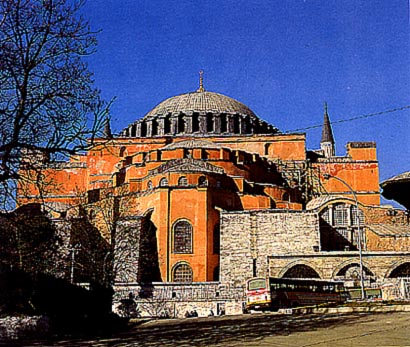
BBC: Arab volunteers want to fight in Kosovo. WorldNetDaily: The Arabs 'Berlin Wall' Persecution.com - The Voice of the Martyrs. Persecution of Eastern Christians under Islam through History. Institute for the Secularisation of Islamic Society. Islam Unveiled, Interview with Ergun Caner. Information about the wicked Sharia Laws. Americans are waking up to the threat of Islam. JEWISH TASK FORCE. Fundamentalist Hate Sermon in Palestine. Books. Bulgarian Bookshop Online. 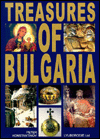
Treasures of Bulgaria.
By Peter Konstntinov
Format: Hardcover, 251pp.
ISBN: 9540715180
Publisher: Saint Kliment Ohridski University Press
Pub. Date: October 2001
.
.

Bulgarian Rhapsody : The Best of Balkan Cuisine.
by Linda J. Forristal, Angela Eisenbart (Illustrator)
Bulgaria is a small Balkan country that gets little attention. On a visit in 1990, however, Linda Joyce Forristal fell in love with both the country and its food. In Bulgarian Rhapsody, she painstakingly presents Bulgarian cooking, placing emphasis on many of its full-flavored and colorful vegetarian dishes, though popular meat dishes are included as well.
The Bulgarian kitchen is heavily influenced by Mediterranean cooking, not a surprise since the neighboring Turks occupied it for 500 years. Greece is also a neighbor, along with Romania and Yugoslavia. Bulgarians favor the slow cooking of stews and soups. They use fresh vegetables, particularly tomatoes, sweet red peppers, eggplant, zucchini, and potatoes. Stuffed grape leaves, phyllo pies, and mousaka--the Bulgarian spelling--will be familiar. Forristal offers a meatless mousaka made with zucchini and several kinds of plakiya, stews that are vibrant with tomatoes and onions, similar to dishes you find in Greek restaurants. The gyuveches are baked stews that resemble their Romanian counterparts. The typical meatless one made with string beans, tomatoes, eggplant, cabbage, potatoes, carrots, red and green bell peppers, and zucchini, resembles a ratatouille. The one made with sausages and red peppers is much simpler.
If you enjoy discovering new dishes, tutmanik, a quickbread made with cheese, and Baked Peppers Stuffed with White Beans are alluring. The potato salad seasoned with oregano and paprika is also different from the usual. Do ignore one technique Forristal uses: peeling roasted peppers under running water washes away much of their flavor. Better to leave a few charred specks of skin than to do this. --Dana Jacobi
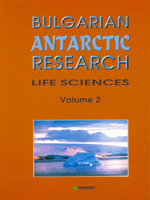
Bulgarian Antarctic Research - Life Sciences, Vol. 2.
Edited by V. Golemansky and N. Chipev
ISBN: 9546420700
The second volume of the Bulgarian Antarctic Research Series contains papers presenting the scientific results of the Fourth and Fifth Bulgarian Antarctic Expedition (1996, 1997). Coverage includes papers on the soil morphology, micriflora, yeast strains, soil microorganisms, macromycetes, interstitial amoebae, soil nematodes, marine crustaceans, cestodes in penguins etc at the Bulgarian Antarctic Base on the Livingston Island, South Shetlands, Antarctic.
.

Voices from the Gulag : Life and Death in Communist Bulgaria.
by Tzvetan Todorov (Editor), Robert Zaretsky (Editor)
One of the most terrible legacies of our century is the concentration camp. Countless men and women have passed through camps in Nazi Germany, Communist China, and the Soviet bloc countries. In Voices from the Gulag, Tzvetan Todorov singles out the experience of one country where the concentration camps were particularly brutal and emblematic of the horrors of totalitarianismcommunist Bulgaria.
The voices we hear in this book are mostly from Lovech, a rock quarry in Bulgaria that became the final destination for several thousand men and women during its years of operation from 1959 to 1962. The inmates, though drawn from various social, professional, and economic backgrounds, shared a common fate: they were torn from their homes by secret police, brutally beaten, charged with fictitious crimes, and shipped to Lovech. Once there, they were forced to endure backbreaking labor, inadequate clothing, shelter, and food, systematic beatings, and institutionalized torture.
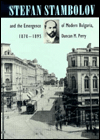
Stefan Stambolov and the Emergence of Modern Bulgaria, 1870-1895.
By Duncan M. Perry.
Format: Hardcover, 241pp.
ISBN: 0822313138
Publisher: Duke University Press
Pub. Date: June 1993
A biography of the controversial leader--a revolutionary in his early years, a dictatorial prime minister in later life--chronicling his transformation and his impact. Annotation c. Book News, Inc., Portland, OR (booknews.com)

SERB - BULGARIAN WAR 1885.
Illustrated book
ISBN 954 90587-1-9
Text, paintings and drawings by Alexander Vatchkov Sofia 2002; 80 pages, soft cover, large format: 21.5 x 29 cm. 8 1/2 x 11 1/12 inches. Text in Bulgarian, 4 pages summary in English. All pictures are described in English and Bulgarian. This is the first book of the series - "The wars for Bulgarian uniting". The priceless information on this obsecure subject can't be deliver better than anybody else but the Bulgarian historians themself. The most valuable for the military collectors and historians are the detailed capture and description of the Bulgarian and Serbian uniforms of all different forces. Tere are: 15 color drawing 16 b&w drawing and 27 b&w pictures 14 maps and a lot move valuable information understandable only for the Bulgarian speaking readers.
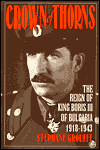
Crown of Thorns: The Reign of King Boris III of Bulgaria, 1918-1943, Stephan Groueff.
A fascinating biography of Bulgaria's tragic monarch, Boris III, based on private correspondence and extensive interviews with members of the Bulgarian royal family. The son of King Ferdinand of Saxe-Coburg-Gotha, Boris became king after the first World War. Noted for defying Hitler wishes for Bulgaria's Jews, the popular king died mysteriously in 1943 after a stormy meeting with Hitler.
.
.

BULGARIAN ARMORED VEHICLES 1935-1945.
Equipment and Armor in the Bulgarian Army. ARMORED VEHICLES 1935 - 1945 By Kaloyan Matev, Sofia 2000, ISBN 954-90587-7-8, 127 pages, soft cover. size 24/16 sm. the whole text is in English and Bulgarian. This book is an illustrated (16 color illustrations and 85 black & white pictures). Study and description of the establishment and organizational development of the Tank Forces in Bulgaria during the period 1935-1945. The short period of time presented permits an in-depth analysis of all known supplies of armored vehicles in the Bulgarian Army till the beginning of the large-scale supply of Soviet equipment. There are presentations of different types and makes of armored vehicles, which allow the book to be used as a reference book too. It is the first time a special attention is paid to the camouflage, registration and identification marks used in the Bulgarian Tank Forces till the end of the World War II.
Bulgaria 1878-1918: A History.
By Richard J. Crampton
From Choice
Although intended for the nonspecialist, {this work} is solidly based upon archival and published sources in Bulgarian and major European languages, and it will be of interest to scholars in the field as well as the general reader. . . . The extensive 'Bibliography and Sources' includes a list of sources used for each chapter as well as general works consulted, but the arrangement is excessively awkward. Despite this flaw, the book is solid, well written, and useful. Recommended for all academic and public libraries with an interest in the history of Bulgaria, the Balkans, and Europe before WW I.
From Philip Shashko - The American Historical Review
The book is a product of extensive, meticulous research in Austrian and British archival materials and in specialized studies, both Bulgarian and foreign. The result is the best history of Bulgaria in English and one of the mostsatisfactory one-volume studies in any language. . . . Those sections dealingwith social and economic life are the most interesting and useful parts of this study. . . . The book has some important omissions. The unification of Bulgaria is not accorded the significance that is its due. . . . Crampton fails to show the process whereby former revolutionaries and idealists became corruptpoliticians and bureaucrats. Had Bulgarian developments been placed in a more general Balkan context, the book would have been of even greater value. Despite these problems this is a significant, indispensable, and balanced accountof Bulgarian history between 1878 and 1918.
From Peter Morris - History
{The author's} careful examination of the relationship between Bulgaria and her self-appointed patron, Imperial Russia, is eloquent of the tribulationsof clientage. The six substantial chapters on economic and social conditionsare particularly interesting. They contain information not readily availableelsewhere and make a significant contribution to knowledge on conditions in the Balkans during the crucial decades before 1914. . . . Whilst occasionally over-elaborate in detail, the unappetising record of graft, corruption and electoral manipulation characteristic of political life in independent Bulgaria provided by the author confirms doubts as to the value of the democratic processin this as in so many other independent eastern European states, and helps explain the readiness with which communist systems were welcomed by substantial sections of their populations after 1945.
Bulgaria's Road to the First World War.
By Richard C. Hall
Discusses Bulgarian foreign policy and how it was transformed from Russia's most loyal Balkan friend in 1911 to its most hated enemy in 1913.
After an introductory survey of Bulgarian history since the 10th century, details internal and external events during the first decade and a half of the 20th that determined the country's diplomatic position when war broke out. Emphasizes the recognition by Bulgarians that only under the tutelage of a great power could they establish an independent country and their attempts to balance concessions with aid.
WWI MACEDONIA German Bulgaria WAR PHOTO BOOK.
Item description: * DONT MISS TO SEE ALL LINKED SCANS REMARKABLE! Presented is an extreme Bibliography rarity and a true militaria and military history gem. This UNIQUE book, or to be precise - a specially designed photo album of Macedonia and the Macedonian front during WWI was made for the German and Bulgarian Army and personally designed by Hannes M. Avenarius. The book has 13 fully engraved pages with superb graphical work of Avenarius and all pages have hand painted parts in full color and gold. All those truly remarkable engravings of Avenarius make the book a fine work of art. Each book that was printed has been personally signed by M. Avenarius and dated.
The book is about the size of an A4 format, 60 or more mm thick and consists of about 100 pages of engravings and art photo reproductions from the Macedonian front, the life of the German and Bulgarian Army, the life of the Macedonian people and other town views. Also there is a number of specially selected photos of the German aviation units as well as of the German Imperial 34th Balloon unit near Skopie.
The title and inside covers of the album are Avenarius engravings printed in red, black and gold and are titled MACEDONIA:
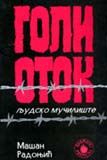
Goli Otok, Dragoslav Mihailovic.
Tito's deathcamp where many MacedonoBulgarians ended up.
Dragoslav Mihailovic (b. 1930) is best known for his novels and short stories. [...] His latest book, Goli Otok (Bare Island), signals a departure from his previous works. It is more a documentary than a novel, consisting of three long interviews and several shorter ones with former inmates of a notorious concentration camp in the fifties and early sixties to which the Yugoslav government sent all those who disagreed with its policy toward the Soviet Union after World War II. Many of the approximately fifty thousand men and women who passed through these camps died there or perished soon after their release; all the survivors carried lifelong scars from their traumatic experience there. Goli Otok was but one of these camps, but its name has come to stand for the entire episode.
ISBN 86-7067-019-4
Goli Otok-Island of Death, Venko Markovski.
This is an English translation of the famous letters of the Bulgarian poet laureate Venko Markovski written after his release from the infamous imprisonment by Tito's government for anti-Titoist attitudes at Goli Otok.
About the Author: Venko Markovski is an important Bulgarian writer.
ISBN: 0-88033-055-4

Beyond Hitler's Grasp : The Heroic Rescue of Bulgaria's Jews,
by Michael Bar-Zohar, Michael Bar Zohar.
During World War II, hundreds of thousands of Jews were deported from the Balkan states to labor and extermination camps in Germany and Poland. Bulgaria, with a Jewish population of only 50,000, sided with Hitler's government early on, its king having become convinced that only with German aid could he successfully press his territorial claims to land lost to Greece and Romania. Yet, in the face of constant German demands, Bulgaria's government refused to deport the nation's Jewish citizens. Instead, as the Bulgarian-born Israeli politician Michael Bar-Zohar writes in this fine contribution to Holocaust studies, "the Bulgarian Jews became the only Jewish community in the Nazi sphere of influence whose number increased during World War II." Bar-Zohar attributes the Bulgarian government's successful resistance to a general absence of anti- Semitism among the populace: most Bulgarian Jews were of the working class and had long since been culturally assimilated; even many of the ardent fascists in the government opposed their being murdered. To be sure, Bar-Zohar writes, the Jews of Bulgaria were persecuted--yet thanks to the efforts of leaders like the parliamentarian Dimiter Peshev and the cleric Metropolitan Stefan, they were spared the terrible fate of so many other Jews in the region. Bar-Zohar's book recounts an almost unknown episode of World War II history through a well-told, fast-paced narrative. --Gregory McNamee
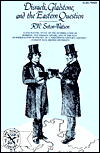
Disraeli, Gladstone, and the Eastern Question: A Study in Diplomacy and Party Politics, Vol. 594.
By Robert William Seton-Watson
Professor Seton-Watson examines the public agitation in England over the Turkish massacres known as the 'the Bulgarian atrocities' and shows how diplomacy and party politics interacted, altering Britain's traditional policy toward the Turkish Empire. He gives an illuminating account of the territorial settlements made at the Congress of Berlin and their effect on the shape of Europe, and offers evidence that from the perspective of later events the triumph belonged not to Disraeli, but to Gladstone.

"AIR POWER OF THE KINGDOM OF BULGARIA"
"AIR POWER OF THE KINGDOM OF BULGARIA"
By Dimitar Nedialkov, Sofia, October 2001. 4 Volumes each 60 pages, format: 28 x 21 cm, soft cover, parallel text in English and Bulgarian.
PRICE for all 4 volumes: $ 24.00
.
.
.

BulgMilitia. Macedonia's Secret Army: The IMRO Militia and Volunteer Battalions of Southwestern Macedonia, 1943-1944.
48 pages, saddle-stitched, 3 poor quality photos (BUT EXTREMELY RARE) of the principal pro-Axis, pro-Bulgarian leaders from Macedonia on BOTH the Yugoslav and Greek sides of the border. An extremely interesting and rare history. Only $10.00.

THE BALKAN WAR 1912-1913.
ISBN 954-90587-8-6
By Alexander Vachkov, Sofia, November 2001. 144 pages, soft cover, size: 24 x 16 cm, parallel text in English and Bulgarian.
From the publishers of the Bulgarian armor books. The book presents an illustrated description and study of the Balkan war 1912-1913 from the Bulgarian point of view. An historical look at these messed up part of Europe where the patriotism and National pride come together to a military miracle. Fight for freedom for land and for revenge. Technical and statistical description of the army equipment and human resources of the Bulgarian army in this war, that made the impossible possible.
.
.
 Balkan Wars, 1912-1913 : Prelude to the First World War (Warfare and History)
by Richard C. Hall
Richard Hall examines the origins, the enactment and the resolution of the Balkan Wars, during which the Ottoman Empire fought a Balkan coalition of Bulgaria, Greece, Montenegro and Serbia, that collapsed in 1913. Based on archival as well as published diplomatic and military sources, this book provides the first comprehensive perspective on the diplomatic and military aspects of the Balkan Wars. It demonstrates that, because of the diplomatic problems raised and the military strategies and tactics pursued to resolve those problems, the Balkan Wars were the first phase of the greater and wider conflict of the First World War.
About the Author
Richard C. Hallis Professor of History at Minnesota State University, Mankato and is the author of Bulgaria's Road to the First World War,(1996).

The Other Balkan Wars
by George F. Kennan
Preamble: "The Other Balkan Wars" is a reprint of the Report of the International Commission To Inquire into the Causes and Conduct of the Balkan Wars (1912-1913). It was published by Carnegie Endowment for International Peace in May-June of 1993, under the presidentship of Morton Abramovitz.
.
.

Bulgarian-Bulgaria Bible.
This is by far the best traslation of the bible available in Bulgarian. The only problem is that it is in old Bulgarian and even some Bulgars have problems with it. It uses a couple of letters no longer used in Bulgaria but after you learn these it is really rather simple. Assuming of course that you already speak Bulgarian. This is also the bible approved by the American Bible society and used by most protestant religions. It is not the bible used by the Bulgarian Orthodox church.
.
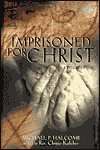
Imprisoned for Christ: A Stirring Testament to God's Sustaining Grace in a Balkan Prison.
by Christo Kulichev, Michael Paul Halcomb
Arrested for preaching Christ...Imprisoned for the Gospel...Substained by God's grace...Released to God's Glory...An evangelical pastor, Rev. Christo Kulichev became a marked man by the Communist party in Bulgaria for his outspoken faith and preaching. He was arrested, tried, and imprisoned for his disobedience to the Communist regime. This is his story of faith in a time of great personal persecution.
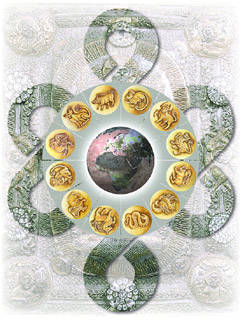
Books for Bulgaria and the Bulgarians.
From TANGRA the All Bulgarian Foundation. The Series "Bulgarian Eternity" and the Series for children "The Bulgarians trough the centuries."
.
.
.
.
.
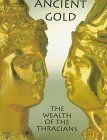
Ancient Gold: The Wealth of the Thracians: Treasures from the Republic of Bulgaria.
By Ivan Marazov (Editor), Alexander Fol, Margarita Tacheva, Ivan Venedikov, Aleksandur Fol. This is the first book that captures the unique culture of Thrace through extensive photographs of ancient treasures from museums throughout Bulgaria. I am happy to see that all photographs are accompanied with captions providing a wealth of information about the objects as well as info in which museums they can be seen. The preface details the history, culture, and religion of Thrace, and it's filled with fascinating facts.
Byzantium and Bulgaria: A Comparative Study across the Early Medieval Frontier.
By Robert Browning / Hardcover / University of California Press / January 1974.
Format: Hardcover, 232pp.
ISBN: 0520026705
Publisher: University of California Press
Pub. Date: January 1974
Tatarskoye respublikanskoye izdatel'stvo "Xeter" (Tarix) - book publisher in Kazan. 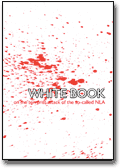
The White Book on the terrorism of the so-called NLA aims to promote the truth regarding the activities of the so-called human rights and democracy fighters of the so-called NLA in Republic of Macedonia. It aims to tell the true motives and objectives, as well as to condemn the atrocities and the acts of violence and terror as not appropriate for democracy, for civilized societies and for the universal human values...Warning: Some of the material at this web site is graphic, brutal, and shocking. Persons who do not wish to see or read such material should go no further.
Ordering instructions - Bulgarian Books only. HENRI POZZI - BLACK HAND OVER EUROPE.
Reprint of the 1935 edition. Published by the Croatian Information Centre, Zagreb 1994. Consisting of WAR IS COMING AGAIN by Henri Pozzi. Translated by FRANCIS J. MOTT
Ashkharhatsoyts: The Seventh Century Geography Attributed to Ananias of Shirak.
Publisher: Caravan Date / City: 1994 / Delmar
Language(s): Classical Armenian, English Introduction.
ISBN # 0-88206-083-X

Crucified Kosovo.
There is a special reason why a Serbian book would be promoted at this Bulgarian website. Albanian desecration, looting, burning and dynamiting of sacred Orthodox Churches is a major problem both in Kosovo and in Bulgarian Macedonia. This issue threatens to unite the Balkan Orthodox against a common threat and that could spell the 3rd Balkan War (after 1912-13).
Here is evidence of Albanian terrorism: The St. Atanasius Orthodox church in the Macedonian village of Lesok was destroyed August 20, 2001. When Macedonians were allowed to visit the old Matejce monastery (September 21, 2001), by UCK/NLA, they found it desecrated by these godless monsters. On December 8, 2001, the night before St. George day another holy place was struck by UCK/NLA's cowardly hand, the church St Gjorgjija was burned down and there are no documents for which to restore it...
Crucified Kosovo, Help to Serbs in Kosovo and Metohia.
Serbian National Defense Council of America has been authorized to sell the book "Crucified Kosovo" and to gather financial help for Serbs in Kosovo by Diocese of Raska-Prizren and His Grace Bishop Artemije of Kosovo. We appeal to the Serbs in the U.S.A. and Canada help this action by ordering the book, printed on fine color, Serbian and English language. Crucified Kosovo is "our cry and appeal to the Christian and civilized world", book that takes account of destroyed and desecrated Serbian Orthodox churches in Kosovo and Metohia.
Please help, order the book by sending your cheque to Serbian National Defense Council of America. Price: $ 10.00 / S&H $3.00 = $13.00
Please, mail your order to the following address, along with your cheque: Serbian National Defense
5782 North Elston Ave.
Chicago, IL 60646-5546 The Systematic Destruction of Orthodox Christian Churches and Cemeteries in Kosovo-Metohija and Macedonia (Serbiana - By Carl Savich). 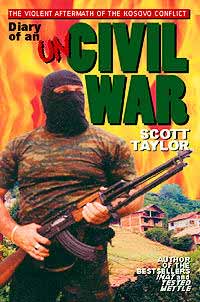
UNCIVIL WAR.
Award winning Canadian journalist Scott Taylor, author of INAT: Images of Serbia and the Kosovo Conflict. This book is presented as a compilation of Scott Taylor's first-hand observation and news reports from the Macedonian conflict 2001, and consists primarily of eyewitness observations and interviews with the people and players who are shaping the future of this land.
General Book Info:
Title: Diary of an uncivil war: the violent aftermath of the Kosovo conflict.
ISBN: 1-895896-20-7
Suggested Retail Price: $19.99
Description: 6" X 9" trade paperback, 208 pp, black and white photos, index, chronology, short biographies of political figures.
Bulk discounts (five books +) 40%
Publisher: Esprit de Corps Books
Book Launch date: February 22, 2002
To order this book:
Esprit de Corps Books, 204-1066 Somerset Street West, Ottawa, ON, K1Y4T3, TEL: (613) 725-1019 / Email: espritdecorp@idirect.com / Contact: Katherine Taylor.
Can be ordered online on Amazon.com. Libraries. Bulgaria: St. Cyrill and St. Methodius National Library. Cultural & Educational Societies and Institutions. Ministry of Culture, mk. Ministry of Education Mk. Ministry of Education and Science Bg. The Statement on the Intentions between the State Hermitage Museum, the Ministry of Culture of the Tatarstan Republic. Bulgaria-America Cultural Exchange, Inc. (BACE) Bulgarian-American Cultural Elite. The Bulgarian-Macedonian National Educational and Cultural Center in Pittsburgh, USA. Hashove, Bulgarian-German Student Organization. Oxford University Bulgarian Society. Harvard Bulgarian Club. St.Kliment Ohridski University of Sofia. Bulgarian Universities / Colleges. School Listings: Bulgaria. ABSA - Association of Bulgarian Students Abroad. University of Sofia, Faculty of History. Studentsko Nacionalno Dvizhenie. REPUBLIKA MAKEDONIJA UNIVERZITET "SV. KIRIL I METODIJ" SKOPJE. Chuvash State University. Bashkir State University. Kazan University. Kabardino-Balkarian State University, Nalchik.
Dress, Design & Folk Costumes - Cuisine.
Bulgarian folk costumes. Chuvash dress. Tatar Dress. Clothing of Bashkirs. Tatar Cuisine. Language. 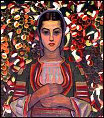
There never was any serious doubt that the Slavic population of Macedonia belonged to the same linguistic, historical and cultural zone as the Bulgarians.
Moreover, the Bulgaro-Macedonian bipolarism ceases being an oddity when viewed in the context of Bulgarian history, which was noted for its continuous seesawing between southwest and northeast, between the Macedonian Ohrid of Saint Kliment and the northeastern Preslav of Saint Naum, two great centers of Cyrillo-Methodian literary activity in the 9th century. Since these early times, political troubles and foreign invasions had kept the Bulgarian timber balanced up and down the bipolar corridor:
the flight of the Preslav scholars to the west in the late 10th century; the rise of the School of Tirnovgrad in the northeast during the Second Empire (12th-14th centuries); the custodial duty of the west during the Ottoman period (the monasteries of Rila, Zograf and Hilandar, and the Catolic school centered in Chiprovec); the decisive role of the northeast in the 19th century Bulgarian Awakening and the adoption of the Eastern Bulgarian dialect as a basis of Bulgarian literary language; Macedonia being excluded from the Bulgarian state by decision of powers at the Congress of Berlin (June-July 1878) some four month after its inclusion in the Great Bulgaria of the Treaty of San Stefano (March 3, 1878). But despite this alternate movement, no Serb observer before the late 1860s really tried to cut piece of timber for Serbia. Stjapan Verkovic, a Serbianized Croat and a former Franciscan friar who adopted Orthodoxy and entered the Serbian service in Ottoman Macedonia, entitled his collection of Macedonian folk songs (1860) The Folk Songs of Macedonian Bulgars, and noted in the introduction that the title was chosen because "should somebody today ask a Macedonian Slav, "What are you?" he would immediately get the answer, "I am a Bulgarian and my language is Bulgarian".
THE NATIONAL QUESTION IN YUGOSLAVIA, by Ivo Banac
Cornell University Press, 1988
pages 309/310 Bulgarian Translators Online. Bulgarian Books and Courses. Bulgarian Language Study Bookstore: Bulgarian Language Books. Bulgarian Language Pronounciation, Spelling and Punctuation... Inscriptions and Alphabet of the Proto-Bulgarians, by Peter Dobrev (East-Iranian Language branch). Cyrillic fonts. Online-converter of Cyrillic fonts. Universal Cyrillic Converter. Soviet Archives on the Creation of Macedonian Language in 1945. Czar Boris questions about the "Macedonian" language. On the codefication of the Macedonian Literary Language & the Serbophile Blazhe Koneski, by Tasho Alusheff. Map of Bulgarian Dialects in the Balkans (cross-border). 
Etymologies of the Ethnonyms Blgar, Macedon etc. Chronological list of existing Etymologies of the Ethnonym BOLGAR(IN). Explaination what the name Macedon [of Greek origin] means. The Scouts of Bulgaria.
National Organization of Bulgarian Scouts. Science. Bulgarian Antarctic Institute. Bulgarian Academy of Sciences, Sofia. Bulgarian and Macedonian Institutes. The Bulgarian Scientific Group in JINR. 
Space Exploration. Ten Bulgarians Are Ready for Space Flights.
Standartnews
Milko Hristov
Saturday, 30 November 2002

We have at least 10 Bulgarian pilots ready for space flights who were tested in Russia, said Prof. Boris Bonev, president of the Space Agency, at the Council of Ministers yesterday. To him, Bulgaria again has the chance to take part in space flights.
.
.
SPACE - RESEARCH - BULGARIAN EQUIPMENT. Arctic Exploration.
Base "St. Kliment Ohridski"
|



